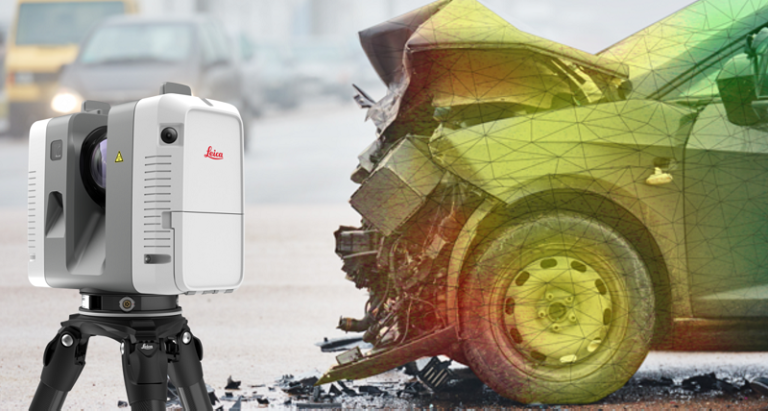Sacramento, California, the state’s vibrant capital, is a bustling hub of government, culture, and commerce. Known for its tree-lined streets, iconic landmarks like the Capitol building, and the convergence of the Sacramento and American Rivers, the city thrives as a dynamic urban center. With a growing population and a network of major highways connecting residents and visitors alike, Sacramento experiences its fair share of traffic activity—and, unfortunately, car accidents. From fender benders in Midtown to more severe collisions on I-5 or Highway 99, these incidents not only disrupt lives but often leave victims dealing with significant physical, emotional, and financial challenges.
As the city continues to evolve, so too do the complexities of car accident investigations. Advanced technology plays a growing role in unraveling these events, helping to clarify details and assign liability. Yet even with modern tools like dashcams, event data recorders, and 3D accident reconstructions, navigating the aftermath of a collision requires expert legal guidance. A car accident lawyer in Sacramento can provide essential support, helping victims understand their rights and secure fair compensation. With the right legal ally, individuals can focus on healing while ensuring their case is built on a solid foundation of evidence and expertise.
Digital Data Collection
The era when accidents were only reconstructed based on what witnesses saw is long behind us. Present-day inquiries utilize advanced means to gather information. Dashcams and traffic cameras, along with smartphones, now record moments as they unfold. These video recordings offer a factual perspective of the events before an accident occurs. Investigators can now view real-time footage, which enables a clearer understanding of the incidents that occurred and the conditions that led to them. Furthermore, modern vehicles are now equipped with onboard computers that retain data. These event data recorders (EDRs), similar to the black boxes found in airplanes, store details regarding speed, braking activities, and steering positions. Having access to this information allows for incident reconstructions, which aid in establishing responsibility and liability.
Advanced Forensics
Recent advancements in technology are also transforming the field of forensic analysis in many ways. For example, the use of 3D laser scanning enables the mapping of crime scenes, allowing lawyers and investigators to recreate accident sites in virtual spaces. This technological breakthrough helps visualize aspects that could easily be overlooked. Elaborate reconstructions help legal experts and jurors better understand accident situations. Simulation software also provides a virtual testing environment where analysts can input gathered data to recreate accidents and gain an understanding of how vehicles respond under specific circumstances. This type of technology is highly beneficial for training purposes as well since it helps professionals prepare for real-life scenarios effectively.
Data-Driven Insights
In today’s investigations, big data analysis is crucially important. By examining and analyzing vast sets of data, we can identify recurring patterns and trends. This facilitates the recognition of high-risk zones or common accident triggers. Following this, planners and decision-makers can take crucial safety actions ahead of time. Moreover, predictive analytics provides remedies by evaluating various aspects, such as weather circumstances and traffic trends. This data aids in predicting areas prone to accidents, enabling authorities to take preemptive actions to mitigate future occurrences.
Enhanced Communication
Advancements in technology also enhance communication and connections between various parties. Cloud-based platforms enable the sharing of information so that investigators, insurance firms, and legal teams can access shared data promptly. This simplifies legal procedures and cuts down on the time spent on investigations. Virtual tools for collaboration help connect people across vast distances by enabling experts from different locations to collaborate on cases without the need for physical travel. This kind of interaction encourages the sharing of knowledge and enhances investigations by bringing in a range of perspectives.
Challenges and Considerations
Despite the progress made in various fields of technology today and in several aspects of life, challenges still exist that continue to persist and pose obstacles to further development. Privacy concerns have become increasingly prominent as data collection becomes more widespread. Protecting sensitive information is paramount, and establishing well-defined protocols is crucial for ensuring the ethical handling of the collected data. Furthermore, It is important for investigators to keep their skills and knowledge up to date by attending workshops and courses to ensure that they are competent in using the tools and techniques available due to their reliance on technology.
Future Prospects
The upcoming days bring forth thrilling possibilities for enhanced technology incorporation in our lives. Artificial intelligence (AI) and machine learning algorithms possess the potential to foresee the reasons behind accidents with unprecedented precision. As AI progresses further into the future, its range of uses will broaden, introducing innovative answers to existing challenges. Driverless cars are paving the way for advancements in transportation technology and are changing the landscape of accident investigations as well. They will lead to the development of procedures that specifically address software glitches and system malfunctions.
In Summary
The impact of technology on revolutionizing car accident investigations is incredibly significant. Innovations in technology improve the way data is collected and analyzed and facilitate seamless communication among stakeholders. By embracing these advancements in technology, we can anticipate more precise processes. Looking forward, technology’s constant evolution presents promising opportunities for pushing boundaries. As society adjusts to these changes, the potential for decreasing accidents and preserving lives becomes increasingly robust.

